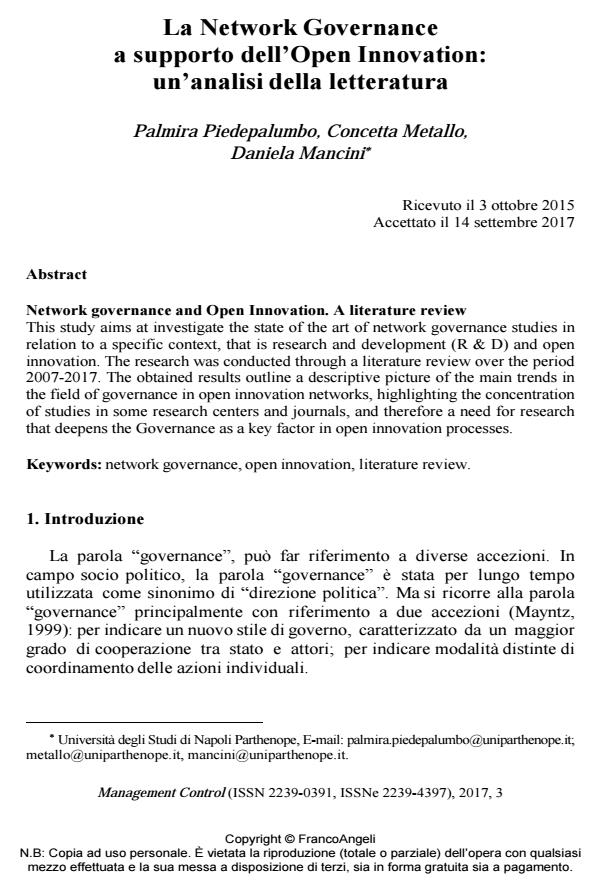Network governance and Open Innovation. A literature review
Journal title MANAGEMENT CONTROL
Author/s Palmira Piedepalumbo, Concetta Metallo, Daniela Mancini
Publishing Year 2017 Issue 2017/3
Language Italian Pages 16 P. 79-94 File size 242 KB
DOI 10.3280/MACO2017-003006
DOI is like a bar code for intellectual property: to have more infomation
click here
Below, you can see the article first page
If you want to buy this article in PDF format, you can do it, following the instructions to buy download credits

FrancoAngeli is member of Publishers International Linking Association, Inc (PILA), a not-for-profit association which run the CrossRef service enabling links to and from online scholarly content.
This study aims at investigate the state of the art of network governance studies in relation to a specific context, that is research and development (R & D) and open innovation. The research was conducted through a literature review over the period 2007-2017. The obtained results outline a descriptive picture of the main trends in the field of governance in open innovation networks, highlighting the concentration of studies in some research centers and journals, and therefore a need for research that deepens the Governance as a key factor in open innovation processes.
Keywords: Network governance, open innovation, literature review.
Palmira Piedepalumbo, Concetta Metallo, Daniela Mancini, La Network Governance a supporto dell’Open Innovation: un’analisi della letteratura in "MANAGEMENT CONTROL" 3/2017, pp 79-94, DOI: 10.3280/MACO2017-003006